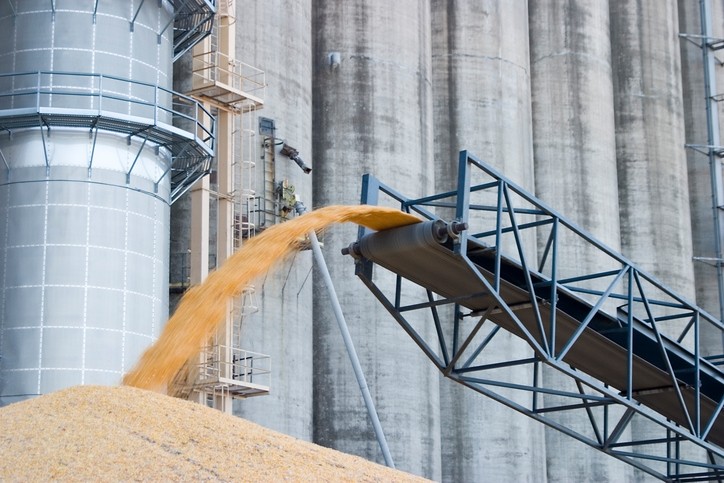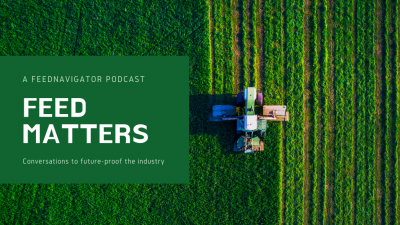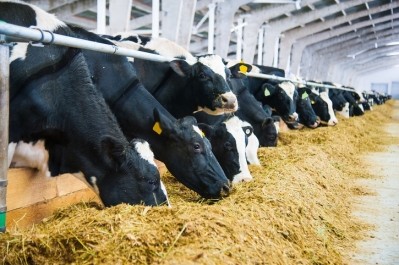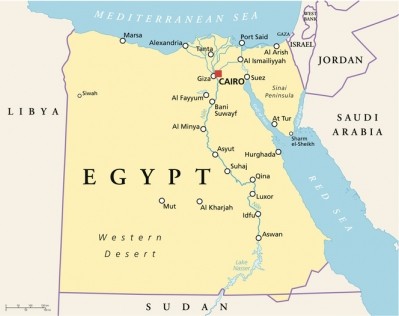Egypt: Buoyant feed market expected on the back of investment in dairy, poultry and fish sectors

The US Department of Agriculture’s (USDA) Foreign Agricultural Service agricultural specialist and attaché, Ahmed Wally and Mariano Beillard, respectively, published a report from on Friday on the Egyptian feed market.
Overall, corn imports to Egypt are expected to increase 1% from the 2017/18 forecast and reach about 9.5m metric tons (MMT), according to the authors. Imports for 2017/18 were reduced based on a drop in the consumption of animal proteins including poultry, red meat and dairy products – lingering effects from the devaluation and floating of the Egyptian currency near the end of 2016.
In 2016, the central bank of Egypt floated the Egyptian pound while trying to eliminate the parallel market, which led to the pound dropping about 60% of its value compared to the US dollar, they said. “With the adoption of a more flexible exchange rate, Egyptian importers of food and agricultural products saw costs double,” they added.
“Inflation is expected to ease in 2018, as the economy adjusts to the more flexible currency regime; inflation is forecasted to average between 18-20% (down from November 2017’s 26.8%),” they said. “Weaker consumer demand and growing supply of goods will contribute to ease inflation.”
“With Egypt’s annual urban consumer price inflation however falling to 17.1% in January 2018 from 21.9% in December 2017 and 33.2% in August 2017, we expect purchasing power recovery, leading to increased consumption, strengthening corn imports,” they said.
However, the US may not see much of the increase as there continues to be some dissatisfaction with the price and quality of US corn, they added.
“Corn imports during CY [calendar year] 2017 reached 9MMT,” the authors said. “Brazil (3.1 MMT), Argentina (2.8 MMT), and Ukraine (2.6 MMT) are Egypt’s top three corn suppliers – Egypt imported just 219,000 MT of US corn (or less than four HANDYMAX vessels = 50,000 to 60,000 DWT).”
Corn stocks for 2018/19 are forecast to be 2.36MMT, they said. Stocks in MY 2017/18 were increased from the initial assessment by 20.2% based on local production and the reduction in consumption.
Additionally, Egypt’s wheat production for the marketing year 2018/19 is expected to increase and imports are forecast at 12.5m metric tons, they said. However, for 2018/19, milled rice production and plantings are expected to drop by 3.3MMT and 588,000 hectares, respectively, they said.
Corn, feed and financial details
In 2016, the central bank of Egypt floated the Egyptian pound while trying to eliminate the parallel market, which led to the pound dropping about 60% of its value compared to the US dollar, said report authors. “With the adoption of a more flexible exchange rate, Egyptian importers of food and agricultural products saw costs double,” they added.
“Inflation is expected to ease in 2018, as the economy adjusts to the more flexible currency regime; inflation is forecasted to average between 18-20% (down from November 2017’s 26.8%),” they said. “Weaker consumer demand and growing supply of goods will contribute to ease inflation.”
Corn imports have been increased from 2017/18, the report authors said. And, import amounts initially predicted for 2017/18 have been reduced to 9.4MMT from an initial 10MMT.
“We attribute the drop in imports due to a reduction in the consumption rates of poultry, red meat, and dairy products as a result of higher inflation rates at beginning of the marketing year,” they said.
Corn production in 2018/19 is expected to be about 6.4MMT, they department said. Production and the amount planted in 2017/18 have been increased from the earlier estimate and now are set at 6.4MMT and 800,000 hectares (HA), respectively.
“Yellow corn accounts for 340,000 HA, with a production of 2.72MMT,” they said. “Post attributes the MY 2018/19 increase in corn areas to an anticipated reduction in rice planted areas.”
Consumption for 2018/19 is predicted to be about 15.9MMT – a rise of 3.9% from the estimate for 2017/18, the report authors said. However, consumption for 2017/18 was reduced from an initial forecast based on a 16.6% jump in poultry feed prices.
“Domestic poultry feed (composed of 60-70%) prices have jumped from EGP 6,000/MT ($333/MT) at the beginning of the current marketing year to EGP 7,000/MT ($388/MT),” they said. “We observe that fish feed prices have also increased at a similar rate – the price of extruded feed for tilapia increased from EGP 6,000/MT ($333/MT) to EGP 7,000/MT ($388/MT).”
Corn prices also have seen increases reaching about EGP 3,660/MT ($200 per MT) from EGP 3,200/MT ($177.70), they said. Soybean meal prices also have increased reaching about EGP 8,500/MT ($472/MT).
It is anticipated that medium- and large-scale poultry producers will see an increase of about 8-10% in flock mortality this winter season, they said. The country is experiencing outbreaks of several viral poultry diseases including Newcastle disease, avian influenza and infectious bronchitis.
“Smaller producers will be particularly hit; flock mortality rates of at least 18-20% are being anticipated,” said the authors. “These producers are ill equipped to front the high cost of vaccines and veterinary drugs.”
However, the expectation is that there will be a quick recovery for the sector in 2018/19, along with growth in aquaculture, they said. Feed demand for both is forecast to grow 4%.
The longer-term expectation is that the country will have larger demand for feed ingredients in the next two to three years to address investment in dairy, poultry and aquaculture, they said.
“Egypt's feed manufacturing mills produce poultry feed mix consisting of 70% yellow corn, 19.4% soybean meal, 3.4% wheat bran, and 1.9% broiler concentrates (fish or meat meals) in addition to minerals and vitamins,” they said. “Aquaculture’s major dietary energy sources include: yellow corn 10-35%, wheat bran 20-30%, rice bran 10-25%, and vegetable oils 1-5%.”
In calendar year 2017, the country’s import of distiller’s dried grains with solubles (DDGS) was 173,600MT an increase of about 30.6% from 2016, they said. The US accounts for the majority, about 98.8%, of Egypt’s DDGS imports.
The feed ingredient is used in beef and dairy cattle feeds, along with those for poultry and aquaculture, they said.










